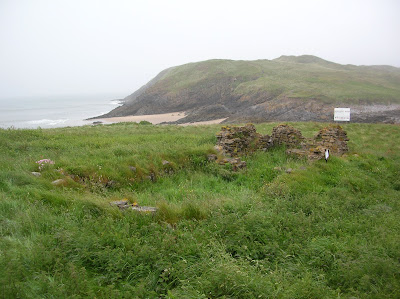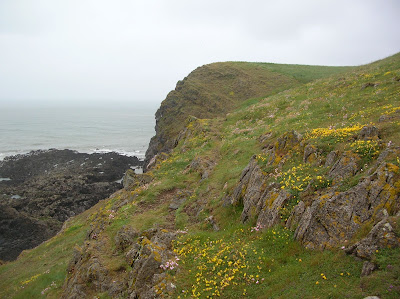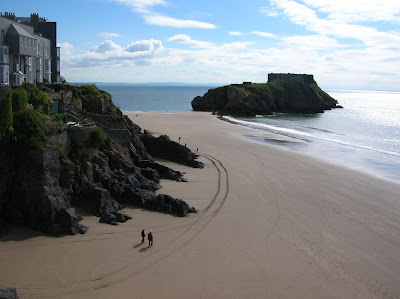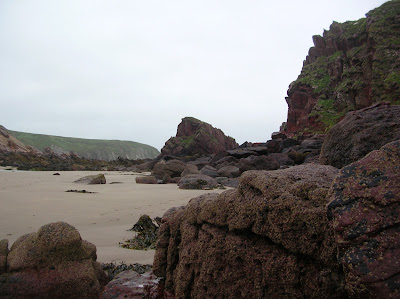This is the tidal island with the most warning signs I have come across so far. The first notice said the beach was dangerous because part of the sea wall has collapsed and there are lots of chunks of concrete, some with metal rods sticking out of them, strewn across it. However it was easy enough to find a way round them. The second notice says the causeway is a death trap, presumably because of the tidal currents, because when the tide is out the walk across the causeway is very easy - there isn't much seaweed on it, the rock bedding planes are almost horizontal and apart from skirting round a few small rock pools there aren't any other hazards. When you get to the island there is another notice saying you have risked your life to visit.
On a sunny summer day Sully Island was a lovely place to spend a while wandering around.
Warning at Swanbridge
Causeway from Swanbridge to Sully Island

When you arrive on the island there is another notice saying you have risked your life to visit the island.
Highest point on the island with Steep Holm in the distance
I'm not sure what the yellow flowers are - they looked like members of the buttercup family
I'm not sure what the yellow flowers are - they looked like members of the buttercup family
South Coast with Flat Holm and Steep Holm in the distance
Swanbridge from Sully Island
There are several paths crisscrossing the island. Some areas are
covered with grass and bracken with wild flowers like bird's foot trefoil, cowslip and salad burnet. The rest is covered by thick scrub
e.g. elder bushes and brambles. The low lying part in the middle is
covered with tall reeds. The north side of the island, which is only a
few metres above sea level, is fringed by a pebble beach. On the south
side there are low cliffs fringed by platforms of stone and large flat
boulders.
Interesting geology on the south coast - looking towards Barry
Triassic mudstones and sandstone with older limestone beneath
Triassic mudstones and sandstone with older limestone beneath
South coast with Steep Holm and Flat Holm in the distance
Sully Island was put up for sale in 2009 for £1.25 million but didn't sell. In 2011 the price was reduced to £95,000 and it was sold to a mystery buyer.

















































